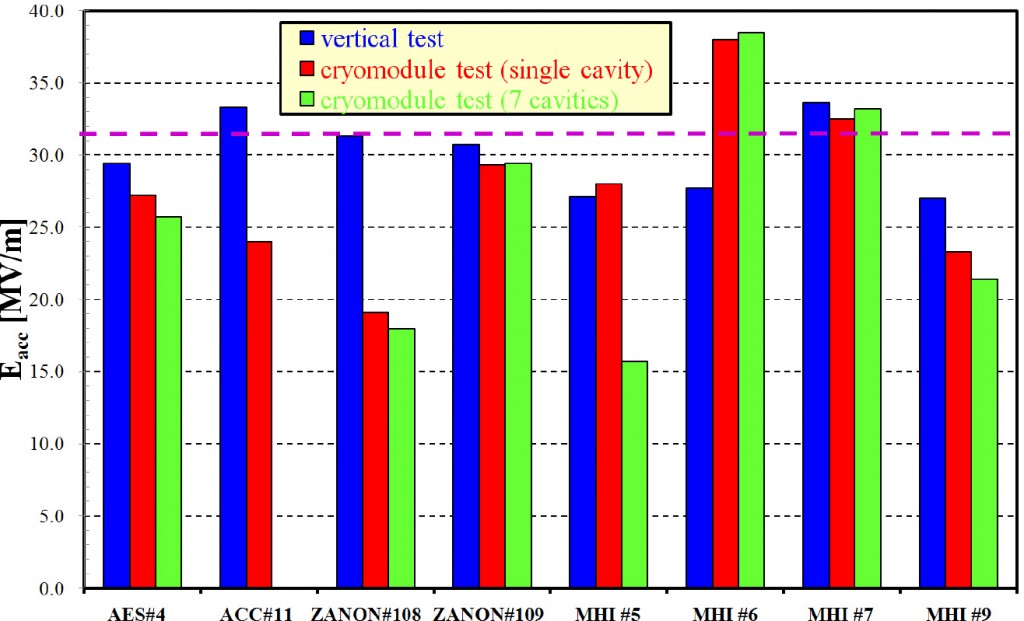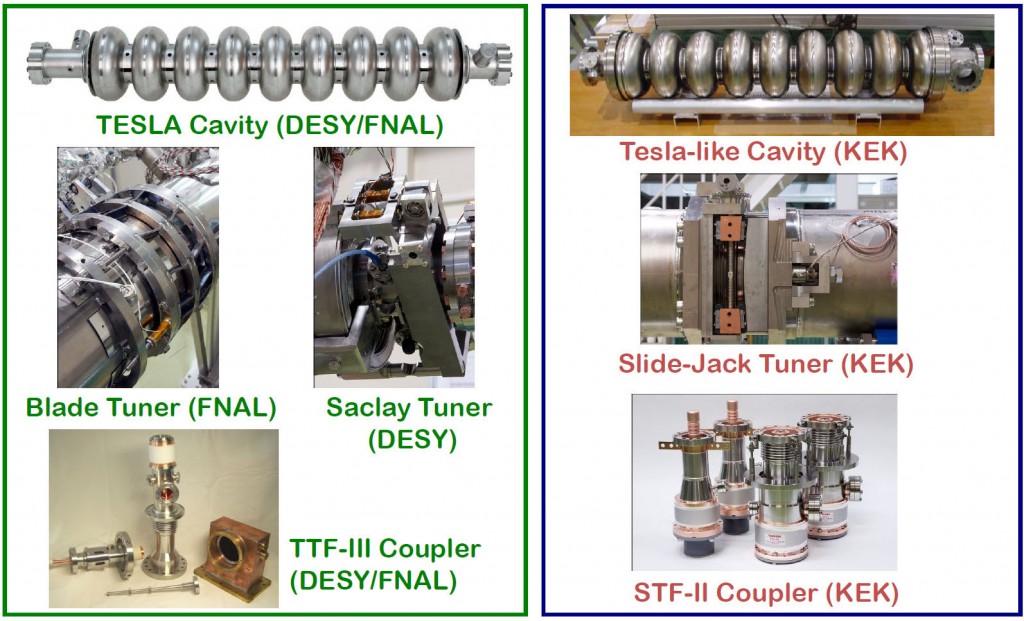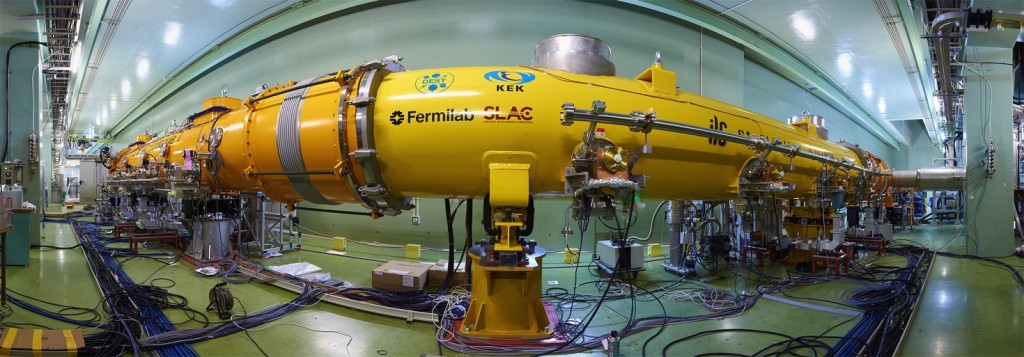The S1-Global experiment was conceived to demonstrate the RF operation of an ILC cryomodule with an average accelerating gradient of 31.5 megavolts/metre (MV/m). The GDE Accelerator Advisory Panel, chaired by Bill Willis, identified it as one of our ILC demonstration experiments with high priority. S1-Global has been successfully completed and a detailed technical report has recently been released. The assembly and testing of a string of superconducting RF cavities in a common cryomodule system were carried out at KEK through a global collaboration.
The main components consisted of two TESLA-type cavities with blade tuners that were provided by Fermilab, two TESLA-type cavities using Saclay-tuners from DESY, and four TESLA-type cavities with slide-jack tuners contributed by KEK. Two half-length cryomodules were provided through KEK and INFN, and components for the RF waveguides were provided by KEK and SLAC. A global collaboration integrated the various components and performed the tests of the S1-Global system.
The S1-Global project was hosted and carried out at KEK. It provided a significant demonstration of single- and multiple-cavity operation with pulsed microwave power and associated low-level RF controls. In addition, it provided a very good test of the ‘plug compatibility’ concept that we are proposing for the ILC by integrating components provided from collaborating laboratories around the world. The idea of the plug-compatibility is that we provide compatible, but not identical hardware components, allowing for differences in tooling and technical choices.

Summary of the achieved gradient values for eight cavities in vertical and cryomodule tests in the S1-Global tests. The dotted line indicates the ILC specification of 31.5 MV/m.
The S1-Global cryomodule experiment was planned to achieve the S1-goal, i.e. to operate at least one cryomodule with an average gradient of 31.5 MV/m. The gradient performance of the participating cavities averaged 30.0 MV/m before installation, 27.7 MV/m for single-cavity operation after installation, and 26.0 MV/m for simultaneous operation of seven cavities. One of the eight cavities was eliminated from the study due to tuner problems.
This result fell somewhat short of the gradient goal, but this was due to technical issues, not fundamental limitations. The performance of cavity number MHI-06 drastically improved from its previous result in the vertical test and achieved a gradient of 38 MV/m. However, the gradient of two of the cavities (TB9ACC011 and Z108) was significantly lower in the cryomodule than in previous tests. Issues during the assembly processes or the transportation to KEK are suspected to have been the causes of this reduced gradient. This problem should certainly be addressed for the ILC.
The other major goal set of S1-Global was to exercise the plug-compatibility concept by building one set of cryomodule from brought-in cavities and couplers from different laboratories. The half-size cryomodule-C, built from INFN cryostat, DESY cavities and couplers, and FNAL cavities and couplers, provided a fine demonstration.

Plug-compatible subsystems provided from collaborating laboratories worldwide integrated into S1-Global
S1-Global provided an excellent test case for carrying out a major accelerator R&D experiment through a worldwide collaboration. The overall goals were set through the GDE R&D board, the equipment was assembled from components contributed from collaborating laboratories around the world, and the tests were performed through a joint collaboration. Valuable technical issues were learned, especially regarding couplers and tuners, despite not quite achieving all our ambitious goals.
S1-Global was successful in demonstrating the overall operation of a realistic small-scale unit of a high-gradient ILC main linac system made from ILC components. The new report is particularly valuable both as a demonstration and in identifying the future work. A condensed version of this report will be included in our Technical Design Report.



Recent Comments